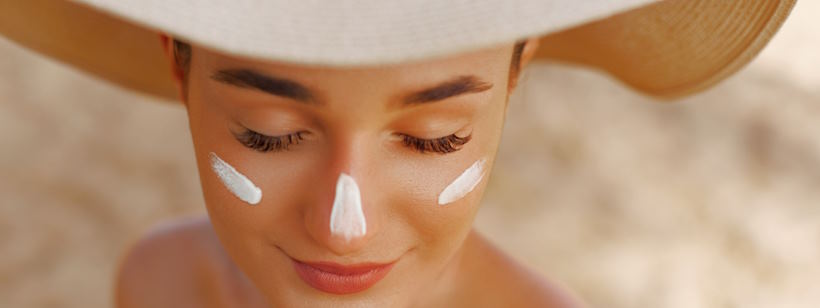Sun damage is a common concern for many individuals, as prolonged exposure to harmful ultraviolet (UV) rays can wreak havoc on the skin. The effects of sun damage range from premature aging, such as fine lines and wrinkles, to more severe conditions like sunburns and skin cancer. Fortunately, there are various beauty treatments available to repair and protect sun-damaged skin, helping to restore its health and radiance.
Repairing Sun-Damaged Skin
Importance of a comprehensive skincare routine:
When it comes to addressing sun-damaged skin, a comprehensive skincare routine is key. Consistency and a targeted approach are vital in repairing the damage caused by harmful UV rays. A well-rounded routine involves cleansing, exfoliating, treating, and moisturizing the skin regularly. Cleansing removes impurities and prepares the skin for treatment, while exfoliation helps to slough off dead skin cells and promote cell turnover. Treating the skin with specific products and ingredients that target sun damage is crucial for effective repair. Lastly, moisturizing helps restore hydration and maintain a healthy skin barrier, aiding in the healing process.

Professional treatments for sun-damaged skin:
- Chemical peels: Chemical peels are a popular professional treatment option for sun-damaged skin. They involve the application of a chemical solution to the skin, which causes controlled exfoliation and peeling. This process helps to reduce fine lines, improve skin texture, and minimize the appearance of sunspots.
- Microdermabrasion: Microdermabrasion is a non-invasive treatment that gently exfoliates the skin using microcrystals or a diamond-tipped wand. It removes the outermost layer of dead skin cells, revealing a fresher, more youthful complexion. Microdermabrasion can effectively diminish sun damage, including hyperpigmentation and rough skin texture.
- Laser resurfacing: Laser resurfacing treatments utilize targeted laser technology to remove damaged skin cells and stimulate collagen production. This procedure helps to reduce the appearance of wrinkles, sunspots, and uneven skin tone caused by sun damage. Laser resurfacing can be customized to target specific areas or the entire face.
- Photofacials: Photofacials, also known as intense pulsed light (IPL) treatments, use pulses of light to target and reduce pigmentation caused by sun damage. This non-invasive procedure helps to fade sunspots and even out skin tone, leaving the skin looking clearer and more radiant.
Topical treatments and ingredients for repairing sun damage:
- Retinoids: Retinoids, derived from vitamin A, are powerful ingredients for repairing sun damage. They stimulate collagen production, improve skin texture, and reduce the appearance of fine lines and wrinkles. Incorporating retinoids into your skincare routine can help rejuvenate sun-damaged skin over time.
- Vitamin C: Vitamin C is a potent antioxidant that helps repair and protect the skin from sun damage. It brightens the complexion, fades dark spots, and boosts collagen synthesis, promoting a more youthful appearance. Look for serums or creams containing vitamin C for effective sun damage repair.
- Hyaluronic acid: Sun-damaged skin often lacks hydration, resulting in dryness and a dull complexion. Hyaluronic acid is a hydrating ingredient that attracts and retains moisture, plumping the skin and improving its texture. Regular use of hyaluronic acid-based products can replenish moisture levels and enhance the skin’s overall health.
- Niacinamide: Niacinamide, a form of vitamin B3, offers multiple benefits for sun-damaged skin. It helps reduce inflammation, fade hyperpigmentation, and strengthen the skin’s barrier function. Niacinamide is a versatile ingredient that can be found in various serums and moisturizers, making it a valuable addition to your sun damage repair routine.
Protecting Sun-Damaged Skin
The role of sun protection in preventing further damage:
After experiencing sun damage, protecting your skin from further harm becomes crucial. Sun protection plays a vital role in preventing the progression of damage and safeguarding your skin’s health. By adopting effective sun protection measures, you can shield your sun-damaged skin from harmful UV radiation, minimize the risk of additional damage, and promote the healing process.

Choosing the right sunscreen:
- Broad-spectrum protection: When selecting a sunscreen, opt for a broad-spectrum formula. Broad-spectrum sunscreens protect against both UVA and UVB rays, as both types contribute to skin damage and aging. Ensure that the product you choose provides comprehensive protection.
- SPF (Sun Protection Factor): Look for sunscreens with a high SPF. The SPF number indicates the level of protection against UVB rays. SPF 30 or higher is recommended to shield sun-damaged skin effectively. However, keep in mind that SPF only refers to UVB protection, so broad-spectrum coverage is still essential.
- Application and reapplication tips: Apply sunscreen generously to all exposed areas of your skin before sun exposure. Remember to reapply every two hours, or more frequently if you sweat or engage in water activities. Proper and consistent sunscreen application is essential in protecting sun-damaged skin and preventing further damage.
Additional protective measures for sun-damaged skin:
- Wearing protective clothing: Covering up with appropriate clothing is an effective way to shield sun-damaged skin from direct sun exposure. Choose lightweight, long-sleeved shirts, pants, and wide-brimmed hats that provide additional protection to vulnerable areas such as the face, neck, and arms.
- Seeking shade during peak sun hours: Limiting your sun exposure during the peak hours of 10 a.m. to 4 p.m. can significantly reduce the risk of further sun damage. Seek shade or create your shade with an umbrella when spending time outdoors to minimize direct exposure to intense sunlight.
- Using accessories like hats and sunglasses: Hats with broad brims offer extra protection by shielding your face and neck from direct sunlight. Additionally, wearing sunglasses with UV protection safeguards the delicate skin around the eyes and helps prevent eye damage caused by harmful UV rays.


